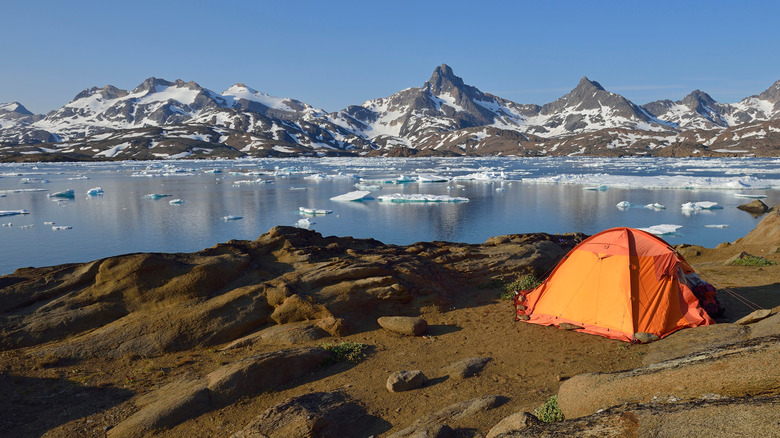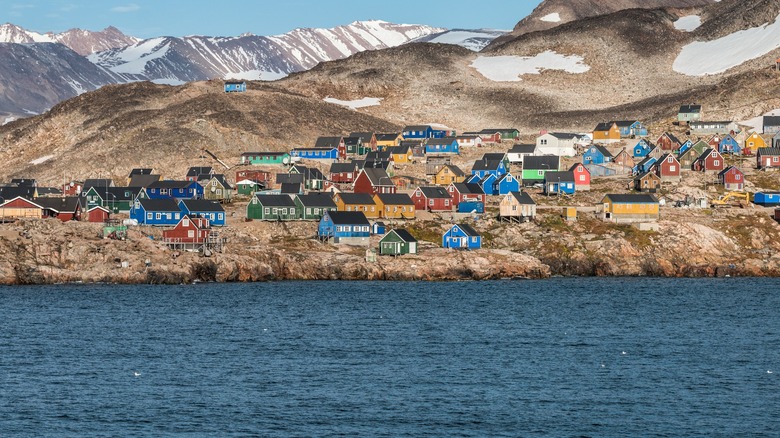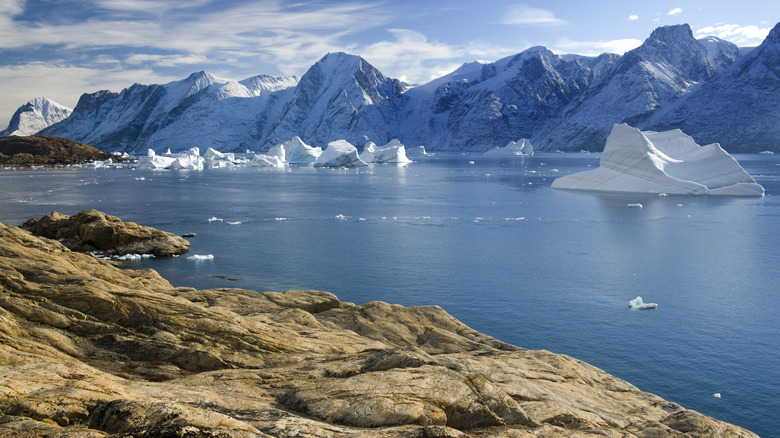North America Is Home To One Of The World's Largest National Parks
National parks have always been places of refuge. National parks act as biodiversity reservoirs, ensuring that species thrive in their natural habitats and significant geological features remain protected. Worldwide, there are more than 6,000 national parks, spanning diverse ecosystems and attracting millions of visitors each year. North America hosts many of these and is home to the world's first national park: Yellowstone.
Yellowstone covers 3,472 square miles, but other parks on the continent now dwarf it in size. Canada's Wood Buffalo National Park encompasses more than 17,000 square miles; Wrangell-St. Elias up in Alaska is more than 20,000 square miles. If you're finding it difficult to imagine such vast expanses, the biggest national park of them all is going to make your head spin. Because when we talk about sheer size and splendor, one park stands out: Northeast Greenland National Park. And it spreads out across a vast 375,000 square miles. It's one of the world's largest protected areas but sees very few visitors and has barely any inhabitants. Approximately 40 people live here permanently, with more sled dogs than humans.
It's an expanse of pristine wilderness untouched by roads, towns, or industry, making it a sanctuary for polar bears, walruses, and muskoxen. While its Arctic landscapes might seem barren at first glance, they are teeming with life. They offer an unparalleled opportunity for rare and lucky visitors to witness nature at its most raw and powerful.
Journeying to the ends of the Earth
Traveling to Northeast Greenland National Park is only for the most intrepid adventurers. The park is, unsurprisingly, in Northeast Greenland, and the nearest town is Ittoqqortoormiit, which holds the title of Greenland's most isolated town. The Greenland Ice Sheet covers 80% of the park. We can't stress enough just how remote this place is.
To get there, you have several options. You can fly into Nerlerit Inaat (Constable Point), near Ittoqqortoormiit, and travel into the park from there. However, most visitors travel to the park as part of a cruise. You must have a permit from the Greenland Government to enter the park.
Things don't get easier once you're in Northeast Greenland National Park. There are no roads or harbors and no accommodations within the park. Visitors are allowed to tent camp. The best time to visit is in the short summer — July and August — when the days are long and the fjords are free of ice. By mid-August, fall colors begin to appear in the park.
How to enjoy Northeast Greenland National Park
Cruises sail the breathtaking coast into the fjords, giving travelers incredible views of glaciers along the shoreline. Many go into Scoresby Sund to float among dramatic icebergs and pass the picturesque mountains of Kaiser Franz Josef Fjord. Ships land where they can in the area, and visitors have the chance to explore the vast tundra by land. Ella Island is a favorite and has several hiking trails. Many expeditions include kayaking excursions, Zodiac cruises and transfers, and even an opportunity to do a polar plunge.
From the ships and on the land, you may be able to spot local wildlife. Kaiser Franz Josef Fjord is an excellent place for spotting muskoxen; walruses are often found in Young Sound; and there's a good chance of seeing a polar bear in Kong Oscar Fjord (many cruises go here too.) When on land, your guide will likely carry a rifle in the event of a bear encounter, as some travelers to the area have reported.
There are so few visitors to the park that it's difficult to find trip reports. Those that are floating around the internet say Northeast Greenland is nothing short of spectacular. Reviews on Tripadvisor mention the awe-inspiring views, abundant wildlife and magnificent scenery and even some reports of seeing several narwhals. For those who undertake this adventure, Northeast Greenland National Park is unforgettable.


